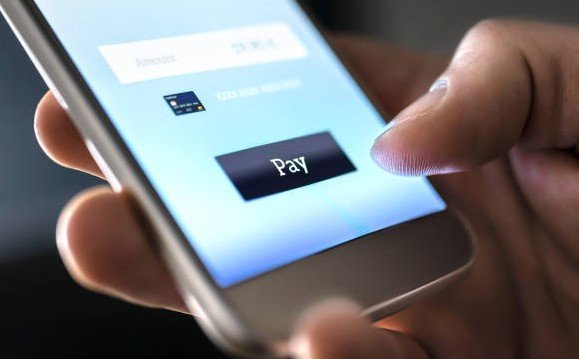Irish Banks Launch Zippay to Challenge Revolut
Three major Irish banks have teamed up to introduce Zippay, a new instant mobile payment service set for launch in early 2026. AIB, Bank of Ireland, and PTSB aim to rival fintech giants like Revolut by offering quick person-to-person transfers right in their existing apps.
This move comes as digital payments surge in Ireland, where over 70 percent of adults now use mobile banking daily. The service promises to simplify sending money using just a phone number, targeting the convenience that has made apps like Revolut popular among millions.
What Zippay Offers Users
Zippay lets customers send, request, or split payments instantly with contacts who also use the service. It integrates directly into the banks’ mobile apps, so no new download is needed.
The platform focuses on ease and speed. Users can transfer up to 1,000 euros per day without entering complex bank details like IBAN or BIC. For requests, the limit sits at 500 euros per transaction, helping with everyday splits like dinner bills or shared rides.
This setup builds on the growing trend of contactless payments in Europe. Recent data shows instant transfers in the EU jumped 25 percent last year, driven by services that cut out traditional delays.
Banks say the goal is to keep pace with fintech innovation while leveraging their trusted networks. With more than five million customers across the three banks, Zippay could quickly gain traction in Ireland’s market.

How the Service Works Step by Step
Getting started with Zippay is straightforward for eligible customers. It rolls out on an opt-out basis, meaning most users get enrolled automatically unless they choose otherwise.
To use it, open your bank’s app and look for the Zippay section. Select a contact from your phone list, enter the amount, and confirm. The money moves in seconds if both parties are signed up.
Here is a quick overview of key limits and features:
| Feature | Details | Limits |
|---|---|---|
| Daily Send Limit | Transfer money to contacts | Up to €1,000 |
| Request Limit | Ask for payments per transaction | Up to €500 |
| Split Payments | Divide costs among groups | No set limit, based on send cap |
| Setup Time | Automatic for most users | None needed |
| Security | Powered by Nexi technology | Bank-level encryption |
This table highlights how Zippay keeps things simple yet secure. The Italian firm Nexi handles the backend, ensuring reliable tech that meets European standards.
Banks will send details soon via app notifications or mail. A new website provides full info, including privacy notes and how to link your mobile number.
Experts note this could reduce reliance on third-party apps. In Ireland, fintech use has grown, but traditional banks hold 80 percent of accounts, giving Zippay a strong base.
Why Banks Are Teaming Up Now
The push for Zippay reflects broader shifts in banking. Fintechs like Revolut have captured young users with fast, fee-free transfers, leading to a 15 percent drop in traditional bank app usage for payments last year.
By joining forces, AIB, Bank of Ireland, and PTSB pool resources to compete. This mirrors similar efforts in other countries, such as the UK’s Paym service, which handles millions of transactions monthly.
Logical reasoning suggests this alliance strengthens their position against global players. Revolut boasts over 2.5 million Irish users, but Zippay taps into established trust and avoids extra sign-ups.
Recent events, like the rise in contactless spending post-pandemic, fuel this timing. Ireland’s Central Bank reports digital payments hit record highs in 2025, up 30 percent from 2024.
Potential Impact on Irish Consumers
Zippay could change how people handle money daily. For instance, splitting a group meal or paying a friend back becomes as easy as texting.
However, not everyone sees it as a full Revolut rival. Some point out it lacks features like currency exchange or investment tools that fintechs offer.
- Pros: Instant transfers across major banks, no new app needed, high security from trusted providers.
- Cons: Limited to participating banks, no international options yet, opt-out might confuse some users.
This balance shows Zippay fills a gap for simple local payments. As Ireland’s economy grows, with GDP up 4 percent this year, such tools support faster commerce.
Industry leaders praise the move. One banking executive called it a smart defense against fintech disruption, potentially saving customers from app overload.
Challenges and Future Outlook
Launching in early 2026 brings hurdles like tech integration and user adoption. Banks must ensure smooth rollout to avoid glitches that plagued similar services elsewhere.
Privacy concerns arise with automatic enrollment. Users worried about data sharing can opt out easily, but clear communication is key.
Looking ahead, Zippay might expand to include more banks or features like merchant payments. This could evolve into a national standard, much like Sweden’s Swish, which processes billions yearly.
Overall, this initiative signals traditional banks adapting to a digital world. It addresses user demands for speed while maintaining reliability.
What do you think about Zippay? Will it change how you pay friends? Share your thoughts in the comments and pass this article along to others interested in banking news.








